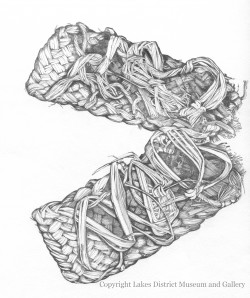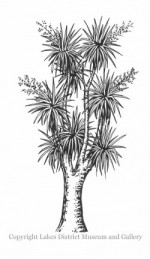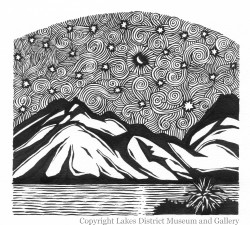
For Students - Māori in the Southern Lakes
The Waitaha people, led by Chief Rakaihautu, explored, named and lived in Te Waipounamu (the waters of pounamu or South Island) from as early as 850AD.
Waitaha was later joined by Kati Mamoe in the late 1500s. They were followed by Ngāi Tahu in the early 1600s. Throughout the 1700s, intermarriage and warfare saw three iwis (tribes) united into one - Ngāi Tahu. Modern Ngāi Tahu can trace their whakapapa back to Waitaha and Kati Mamoe.
The Wakatipu area was important to all iwi who used it as a base primarily for seasonal hunting and gathering expeditions and the extraction of pounamu (greenstone). Archaeologists have found evidence of settlements at Tahuna (Queenstown), Oterotu (Frankton), and Tititea (at the junction of the Kawarau and Shotover Rivers). There is also evidence of camping sites in and around the Dart River, Glenorchy, Bob's Cove, Pigeon Island, Kingston and Lake Hayes.
Hunters and Gatherers
Before its extinction in the late 1600s, moa was a major source of food. Annual hunting trips were made in the months of June and July for weka, a hen sized bird, because it was fat and healthy at this time. Iwi also captured and ate other native birds and tuna (eels). Ngāi Tahu gathered the leaves and roots of ti (cabbage tree) which were used for making sandals and from which they extracted sugar. The leaves of tikumu (mountain daisy) were used for cloaks and fragrant oil was produced from taramea (wild Spainard).
for making sandals and from which they extracted sugar. The leaves of tikumu (mountain daisy) were used for cloaks and fragrant oil was produced from taramea (wild Spainard).
Pounamu could be found in plentiful supply around the Routeburn and Dart Valleys at the head of Lake Wakatipu. Māori prized the milky green coloured pounamu found in this area, called inanga. Pounamu was valued not only because it is strong and durable, but also because it is extremely beautiful. The stone could be carved into toki (adzes), chisels, mere and personal ornaments such as hei tiki and ear adornments.
With the arrival of Europeans, Ngāi Tahu increasingly settled along the coastal regions of Te Waipounamu, although they still came inland on a seasonal basis. By 1853, when the first European, Nathaniel Chalmers, arrived in the Wakatipu, Maori were no longer living in the area. However, Chalmers was guided up from Southland by Reko, a chief from Tuturau.
Ngāi Tahu Land claims
On the 6th of February 1840 Maori chiefs from around Aotearoa and the British Crown signed the Treaty of Waitangi. The treaty was then taken around the country and signed by Ngāi Tahu chiefs at Ruapuke Island and Otakou in June. The treaty guaranteed Māori exclusive and undisturbed possession of 'their lands, villages and all their treasure' by the Crown in exchange for the right to govern the country.
Te Kereme (the land claim) was based on the fact that the Crown did not do everything they promised to do. Ngāi Tahu was made almost landless because they were forced to sell their land. The schools and hospitals that were promised were not given. Ngāi Tahu also lost some of their mahika kai (sources of traditional food). Because Ngāi Tahu did not have the same access to land and education like the Europeans, it meant they did not have access to the same educational and job opportunities as Europeans did.
In late 1998 the New Zealand Government and Ngāi Tahu came to a settlement or agreement over the treaty. The Government, on behalf of the Crown, apologised over the treatment of Ngāi Tahu and part of the settlement included financial compensation.
To find out more about Ngāi Tahu follow this link - www.ngaitahu.iwi.nz or www.teara.govt.nz/NewZealanders/MaoriNewZealanders/NgaiTahu/en
Did you know?
-
Moa were large, flightless and native birds. Moas could weigh as little as 20 kilograms or be as heavy as 240 kilograms! The largest Moa of all was the Dinornis Giganteus of which the females could grow up to 3.6m metres. That makes it thought to be the tallest bird that ever lived!
- Moa were hunted to extinction in Aotearoa by around 1600 AD.
- Pounamu is found at the head of Lake Wakatipu in the Routeburn Valley and the Dart Valley.
- Māori knew there was koura (gold) in the Otago rivers but they did not value as they did pounamu. Probably because it was malleable (or soft) and couldn't be made into tools or weapons like pounamu.
- Jack Tewa, a Māori musterer, discovered gold in the Arrow River late in 1862. Before long there was a gold rush. Ask the educators more about Jack Tewa when you come to the Museum - he's an interesting man!
Activities
- Look up the following words in a dictionary and define them:
- Native
- Extinction
- Artefacts
- Archaeologists
- Evidence
- Settlement
- http://www.maoridictionary.co.nz/ Use this website to define some of the words above in bold. If there are multiple answers, get in pairs and see if you can figure out the best fit.
- Create a mind map of all the different native animals Ngāi Tahu came to the Wakatipu to hunt. Can you discover how the meat was preserved?
- Research all the uses for Pounamu. It would be fantastic if you could tell the educators why you think Pounamu was so valuable!
This website might help you - www.teara.govt.nz/EarthSeaAndSky/MineralResources/PounamuJadeOrGreenstone/en
The Legend of Lake Wakatipu
Many years ago there was a chief who had a very beautiful daughter called Manata. Many young men wanted to marry her, including a young warrior Matakauri who was Manata's sweetheart. Manata's father, however, would not let the couple marry as he thought Matakauri was unworthy.
One day a terrible taniwha (giant) named Matau came and stole Manata. The chief was heartbroken and said that anyone who rescued his daughter could marry her. Even the strongest of the young warriors quailed at the prospect of fighting the taniwha. However, Matakauri's love was strong and he set out in search of the taniwha. After finding Matau in the ,he observed that whenever a nor'wester blew, the taniwha went to sleep. While Matau slept, Matakauri crept close and found Manata but she was tied to the taiwha with a strong cord. Manata then sobbed bitterly and so great was her love for Matakauri that when the tears fell on the cord the love in them dissolved it. Together the pair fled and as promised the chief allowed the couple to marry.
Matau, however, was still resident in the mountains and Matakauri decided to deal with him once and for all. He waited until there was a strong nor'west wind and the taniwha was asleep and then he set alight the bracken bed that Matau was sleeping on. Matau was surrounded by flames and the fat from his burning body made the flames even more fierce, burning a hole deep in the ground. The fire also melted the snow on the hills and water poured in filling up the hole left by Matau's burnt body. If you look at the outline of Lake Wakatipu, you can see that it resembles the shape of a person lying down, the shape of a giant!
The only part of the taniwha's body that didn't burn was his heart, which continues to beat to this day. If you watch the lake closely, you will see it rise and fall periodically.
Myth reproduced courtesy of Reed Publishing (NZ) Ltd.


